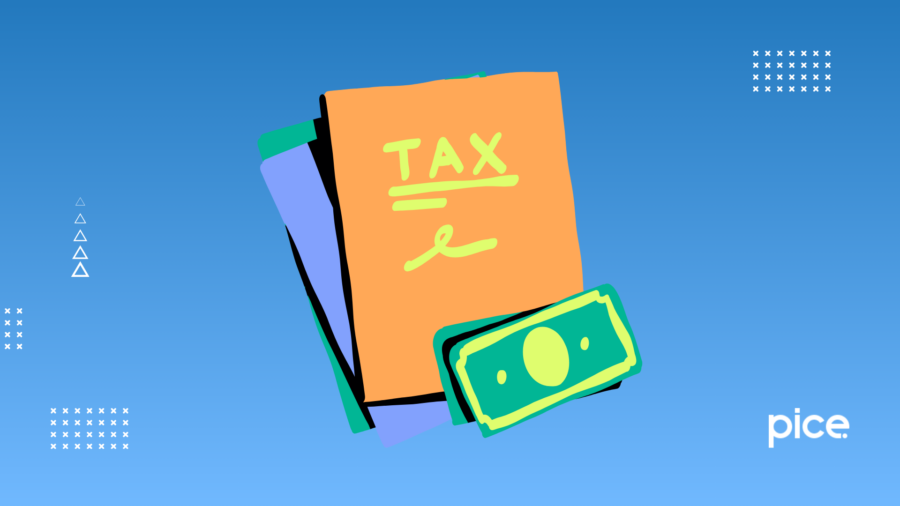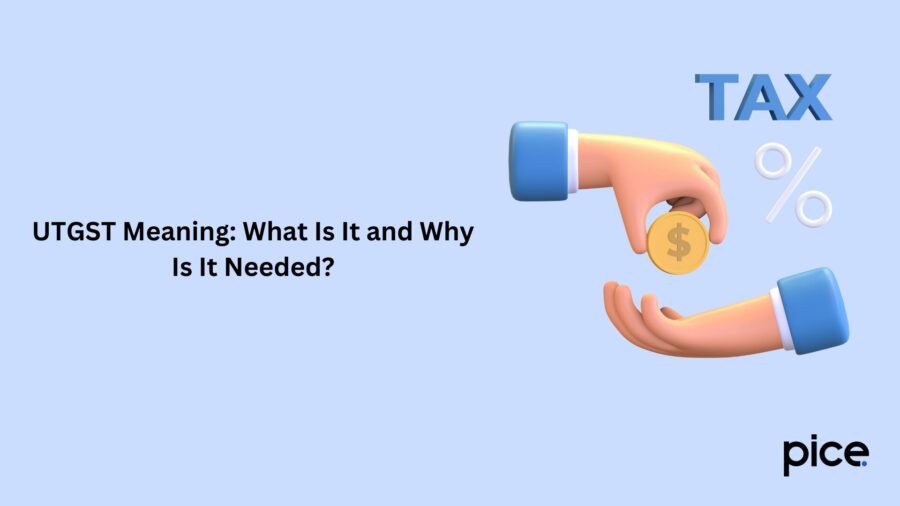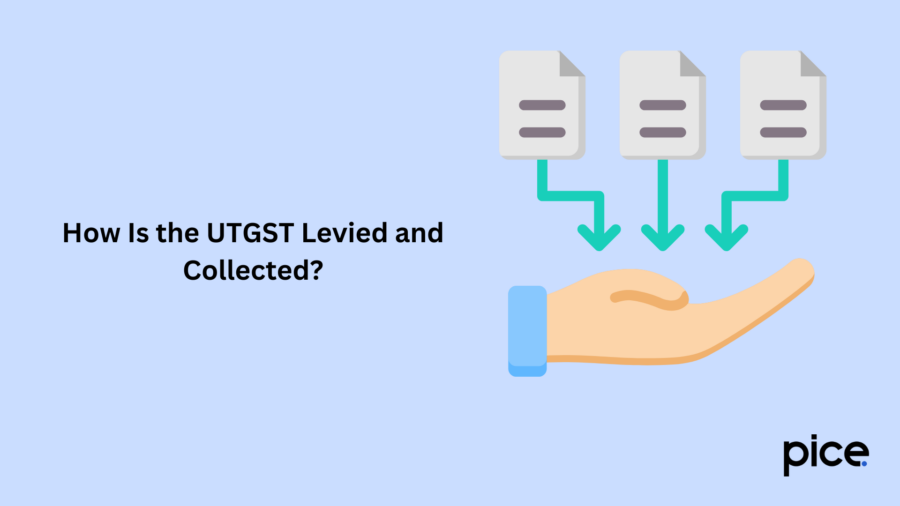What is UTGST? An Overview
- 31 Dec 24
- 9 mins

What is UTGST? An Overview
- UTGST Meaning: What Is It and Why Is It Needed?
- Which Union Territories Are Included in Union Territory Goods and Service Tax (UTGST)?
- What Transactions Qualify Under the UTGST?
- What Are the UTGST Rates? Is There Any Difference?
- How Is the UTGST Levied and Collected?
- Benefits of Implementing Union Territory Goods and Services Tax
- Code and Abbreviations for Union Territories with UTGST Applicability
- Documents Required for UTGST Registration
- Compliance Requirements Under UTGST
- Importance of UTGST Rate Notifications
- Challenges with UTGST Rate Notifications
- Conclusion
Key Takeaways
- UTGST replaces SGST in Union Territories without legislatures.
- Applicable UTs include Chandigarh, Lakshadweep, and Andaman & Nicobar Islands.
- UTGST rates match SGST, ranging from 0% to 28%.
- Businesses must register, file returns, and reconcile UTGST payments.
- UTGST ensures uniform taxation and fosters economic growth in UTs.
Goods and Services Tax (GST) was introduced in 2017 to replace multiple indirect taxes in the Indian taxation system. It aimed to facilitate a uniform taxation system in the country. GST can be classified as Integrated Goods and Services Tax (IGST), Central Goods and Services Tax (CGST), State Goods and Services Tax (SGST) or Union Territory Goods & Services Tax (UTGST).
Learn in detail about what is UTGST to understand the applicability of GST in specific union territories (UT) in India.
UTGST Meaning: What Is It and Why Is It Needed?

UTGST stands for Union Territory Goods and Services Tax. The introduction of UTGST aimed to streamline the Indian taxation system with uniformity in tax rates. This tax applies when goods and/or services are consumed or supplied to UTs in India.
UTGST applies in addition to CGST. In other words, it replaces SGST in the UTs. As a result, the UTGST rate is the same as the applicable SGST rate.
Which Union Territories Are Included in Union Territory Goods and Service Tax (UTGST)?
UTGST applies to specific UTs where there is no legislature. Andaman and Nicobar Islands, Dadra and Nagar Haveli, Lakshadweep, Daman and Diu, Chandigarh and Ladakh are the UTs in India where UTGST applies.
What Transactions Qualify Under the UTGST?
Here are the transactions that qualify for UTGST:
| Type of Supply | Output Tax Liability | Applicable Section |
| Supplies within UTs without a governing body | UTGST + CGST (within the UT border) | Under Section 8(1) and 8(2) of the IGST Act |
| Supply of goods or services or both between two UTs without legislature | Integrated GST (between two or more UTs) | Under Section 7(1) and 7(3) of the IGST Act |
| Supply of services or/and goods between a Union Territory without legislature and a state or Union Territory with a governing body | Integrated GST | Under Section 7(1) and 7(3) of the IGST Act |
What Are the UTGST Rates? Is There Any Difference?
The Central Government determines the rate of UTGST on recommendation by the GST Council. These rates are notified based on notifications issued as per Section 7 of the UTGST Act. SGST and UTGST have the same tax slabs applicable, which are 0%, 5%, 12%, 18% and 28% (maximum rate). In addition, the exemption rules for UTGST are the same as the SGST.
Here are the current rates of UTGST as of August 2023:
| UTGST Rates | Goods | Services |
| Nil | Essential goods including milk, food grains, eggs and others | Essential services include education, health care and others. |
| 0.25% | Precious stones and rough diamonds | - |
| 3% | Gold, silver and other valuable metals | |
| 5% | Common goods like spices, coffee, tea | Transport services including railways, airways and others |
| 12% | Processed foods like cakes, biscuits and others | Accommodation services like lodges, hotels and others |
| 18% | Industrial goods like chemicals, machinery and others | Financial services like insurance, banking and others |
| 28% | Luxury goods like motorcycles and cars | Entertainment services like amusement parks, cinemas and others |
How Is the UTGST Levied and Collected?

The Central Government of India levies UTGST on intra-union territory supplies. Businesses have to pay UTGST in addition to CGST for taxable supplies. Here is an example illustrating how the Central Government levies and collects UTGST:
A dealer Mr. X, in Chandigarh, sells goods amounting to ₹10,000 to a customer in the same Union Territory. The GST rate applicable is 18% which includes 9% CGST and 9% UTGST. Mr X will charge a GST of ₹1,800 wherein ₹900 is CGST and the remaining ₹900 is UTGST. The dealer in Chandigarh will have to collect the GST and deposit it with the Central Government of India.
Benefits of Implementing Union Territory Goods and Services Tax
Here are the benefits of implementing the Union Territory Goods and Services Tax:
● UTGST helps simplify the tax structure and reduce tax multiplicity in the UTs.
● Consumers can enjoy lower tax burdens with the elimination of cascading effects of taxes.
● Application of UTGST ensures tax compliance, improving administration in the UTs without legislature.
● It promotes a uniform taxation system in India.
● UTGST implementation significantly facilitates the economic development and growth of the UTs without governing bodies.
Code and Abbreviations for Union Territories with UTGST Applicability
Here are the codes and abbreviations for UTs where UTGST applies:
| Code | Abbreviation | Name |
| 35 | AN | Andaman and Nicobar Islands |
| 31 | LD | Lakshadweep |
| 26 | DN | Dadra and Nagar Haveli |
| 25 | DD | Daman and Diu |
| 4 | CH | Chandigarh |
Documents Required for UTGST Registration
Here is the list of documents that you need for UTGST registration:
● Applicant’s Pan Card
● Aadhar card
● Proof of business address like electricity bill, rent agreement and others
● Business identity proof like a certificate of incorporation, partnership deed and others
● Bank account details like bank statements or cancelled cheques
● Applicant’s photograph
● Digital signature of the applicant
● Authorisation letter or board resolution for the authorised signatory
Compliance Requirements Under UTGST
Businesses need to comply with the UTGST compliance procedures as follows:
● Registration
Businesses operating within UTs where UTGST applies need to register themselves. These businesses will receive a Goods and Services Tax Identification Number (GSTIN) that allows them to supply goods and/or services within the Union Territory or to other states and UTs.
● Tax Calculation and Payment
A taxable person has to calculate the taxes based on the notified tax rates. A stable income helps taxpayers calculate the taxes effectively while paying the right amount of tax to the government.
● Filing Returns
Businesses need to file UTGST returns within the due date, monthly or quarterly based on their turnover threshold in accordance with the GST laws. Failure to file returns within the stipulated time might result in adverse legal implications for the GSTIN holder.
● Record Keeping
Businesses need to maintain records of the transactions, supplies of goods and services in sales invoices, expense documentation and additional documents. This helps them comply with tax laws and audit regulations.
● Reconciliation
As a business, ensure you reconcile the UTGST Input Tax Credit (ITC) to the books of accounts to facilitate correct tax reporting for a specific tax period.
Importance of UTGST Rate Notifications
The purpose and importance of Union Territory GST notifications are as follows:
● To Provide Clarity and Transparency
UTGST notifications help businesses and consumers know about tax obligations and liabilities. It ensures transparency between the tax collector and the taxpayer in the Indian taxation system.
● Facilitate Compliance
Timely supply and delivery of UTGST rate notifications by the Central Government can help businesses avoid penalties, interests and litigations. They can seamlessly calculate the tax liabilities as per the tax regulations and pay the taxes within the stipulated time frame.
● Enabling the Policy Implementation
The GST Council sends notifications to the UTs about UTGST rates and the introduction of new taxes, cess and exemptions. Based on the notifications, policies are implemented in the UTs to align them with the taxation system of the rest of the country.
● Promoting Economic Growth
UTGST rates are revised periodically to promote the economic growth of the UTs. This revised rate facilitates a balanced revenue generation to fund the activities of the UTs without a legislature. The GST Council implements the revised rates in the UTs without governing bodies for businesses and consumers to comply with.
Challenges with UTGST Rate Notifications

Here are the drawbacks of UTGST rate notifications:
● Compliance Burden
Periodic changes in the UTGST rates and their implementation increase the compliance burden on businesses. These businesses operating in the UTs without a legislature have to continue updating their system and pricing strategies to align with the new regulations and rates. Further, these businesses have to engage in continuous tax calculations to comply with the GST laws.
● Transitional Challenges
Businesses often face challenges while transitioning from an old UTGST rate to a new UTGST rate. Inventory purchased before the introduction of the new UTGST rate is a significant challenge for businesses as the rate of UTGST that it will attract is often unclear. These inventories attract different rates of taxes, further deepening the challenges for businesses operating in the UTs where UTGST applies.
In addition, input tax credit adjustments are another transitional challenge for businesses. Educating the stakeholders and aligning their practices to the new UTGST rates creates additional challenges for businesses, functioning in the UTs with no governing body.
● Potential Uncertainty
In case of a lack of clear guidelines on the UTGST rates or a delay in receiving notifications pertaining to UTGST rates, businesses often face challenges in their tax planning. This further results in compliance issues for businesses operating in the UTs in India without any legislature.
Conclusion
To answer what is UTGST, it needs to be mentioned that it is the GST applicable for supplies within specific UTs in India, having no governing body. In the case of supplies from UTs, UTGST applies in addition to CGST. The rates of UTGST are the same as the SGST rates.
The total GST rate is equally segregated into CGST and UTGST for equitable distribution of government revenue from the tax collected from UTs.
💡If you want to streamline your payment and make GST payments, consider using the PICE App. Explore the PICE App today and take your business to new heights.
 By
By 
















